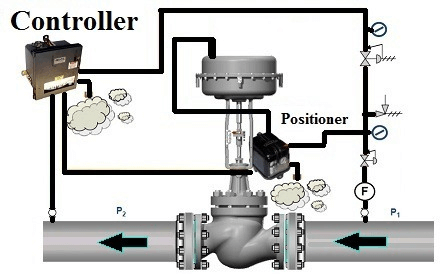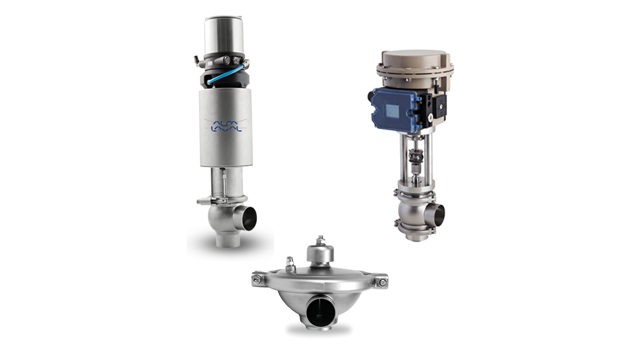The Function of Control Valves in Fluid Flow Administration Solution
The Function of Control Valves in Fluid Flow Administration Solution
Blog Article
Achieve Seamless Integration and Control With High Quality Building Automation Controls
In the realm of modern-day building administration, the value of quality building automation controls can not be overemphasized. Embracing quality building automation controls is not simply an issue of ease but a tactical important for companies intending to enhance their centers' efficiency and sustainability.

Evolution of Structure Automation Controls
Throughout the previous few years, the advancement of building automation controls has actually considerably transformed the way buildings are taken care of and operated. Constructing automation systems largely concentrated on fundamental features such as controlling ventilation, heating, and air conditioning (A/C) systems. Nonetheless, as modern technology advanced, these controls have become more advanced, enabling a broader variety of structure systems to be incorporated and managed centrally.
The development of constructing automation controls has actually seen a change in the direction of even more smart systems that can adjust to changing conditions in real-time. This adaptability is vital for maximizing power effectiveness and making certain occupant convenience. Additionally, contemporary building automation controls now provide features such as predictive maintenance, remote monitoring, and data analytics, enabling facility managers to make data-driven decisions to boost structure efficiency.

Advantages of Quality Combination
The advancement in structure automation regulates in the direction of more smart systems has actually underscored the significant benefits of high quality combination in enhancing structure operations and improving general effectiveness. This central control likewise offers better exposure and understandings right into building performance, making it possible for aggressive upkeep and optimization approaches. In general, the benefits of high quality combination in structure automation controls are undeniable, providing enhanced effectiveness, convenience, and operational efficiency.
Improved Customer Experience and Ease Of Access
Enhancing customer communication with building automation controls with user-friendly design and improved access elevates the total experience for occupants and center supervisors alike. By concentrating on user experience, building automation systems can become a lot more effective and user-friendly. User-friendly user interfaces, clear navigating, and customizable settings encourage users to connect with the controls quickly and properly.
Ease of access functions play an important function in making certain that all individuals, consisting of those with specials needs, can use the structure automation regulates with convenience. Integrating features such as voice commands, tactile buttons, and color-contrasted display screens can improve ease of access and make the controls a lot more comprehensive.
Furthermore, boosted individual experience leads to greater individual complete satisfaction, increased performance, and better decision-making. Occupants can change ecological settings according to their preferences, while facility managers can successfully keep an eye on and take care of building systems - control valves. On the whole, focusing on customer experience and ease of access in structure automation regulates contributes to a more effective and smooth structure environment for all stakeholders included
Lasting Practices Through Automation

Additionally, automation can facilitate the assimilation of sustainable energy resources such as solar panels or wind generators right into structure operations. By immediately readjusting energy use based on the availability of renewable resource, buildings can further lower their reliance on non-renewable resources. This smooth combination of sustainable practices her response not only benefits the environment yet additionally improves the general functional effectiveness and cost-effectiveness of the structure. Through automation, buildings can line up with modern sustainability objectives and add to a greener future.
Future Trends in Structure Control Equipment
In expectancy of progressing modern technologies and advancing sustainability methods, the trajectory of building control systems is poised to embrace transformative strategies and ingenious services. One famous fad forming the future of building control systems is the raised assimilation of Expert system (AI) and machine understanding. These modern technologies allow buildings to adapt in real-time to changing problems, optimizing power usage and enhancing convenience for passengers. Furthermore, the Net of Things (IoT) is changing building control systems by connecting sensors and devices to improve and streamline procedures efficiency.
Another vital pattern is the focus on cybersecurity actions to safeguard versus potential risks to building automation systems. As buildings become much more interconnected, ensuring robust cybersecurity procedures will be important to protect delicate information and stop unauthorized accessibility.
Furthermore, the shift towards cloud-based platforms is getting energy, permitting for streamlined control and remote accessibility to building systems. This assists in less complicated surveillance, upkeep, and updates, improving the overall performance and versatility of building control systems. As innovation proceeds to advance, these trends are expected to form the future landscape of building automation controls, driving innovation and sustainability in the built atmosphere.
Final Thought
Future fads in building control systems are likely to focus on further boosting automation capabilities for enhanced energy efficiency and total efficiency. It is vital for building owners and operators to focus on the adoption of top quality building automation regulates to optimize building procedures and achieve long-lasting sustainability goals.
In the world of contemporary structure administration, the importance of quality structure automation controls can not be overstated. Generally, the More hints evolution of structure automation regulates continues to drive innovation in the building management market, using new opportunities for producing smarter and much more lasting buildings.
The advancement in building automation controls in the direction of more intelligent systems has actually underscored the considerable benefits of quality assimilation in enhancing structure operations and improving overall effectiveness. In general, focusing on see this here individual experience and accessibility in building automation regulates adds to an extra effective and smooth building setting for all stakeholders involved.
It is crucial for structure proprietors and drivers to focus on the fostering of top quality building automation regulates to optimize structure procedures and accomplish long-lasting sustainability goals. - control valves
Report this page